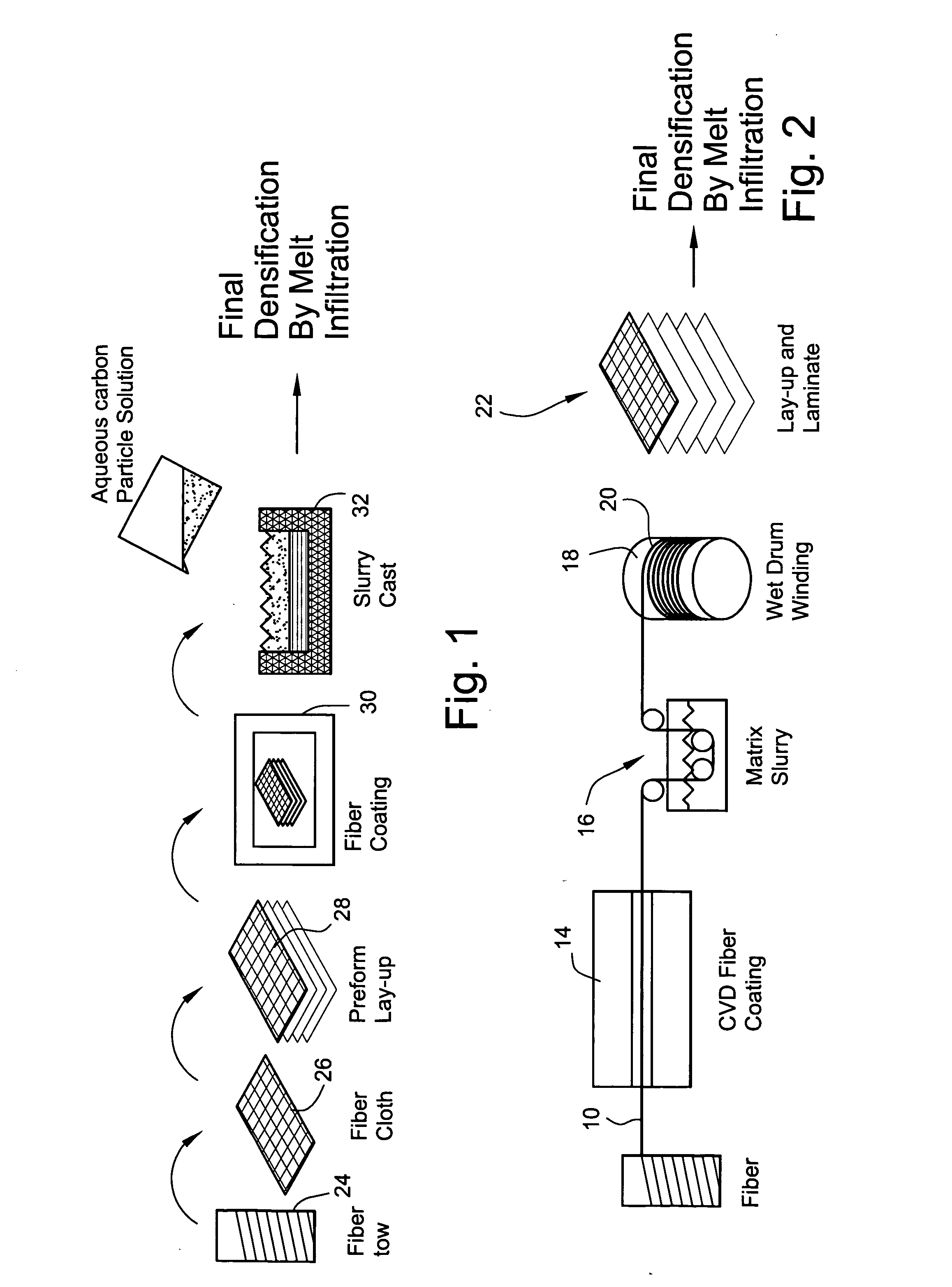Method for performing silicon melt infiltration of ceramic matrix composites
a ceramic matrix and composite technology, applied in the field of ceramic matrix composite manufacturing, can solve the problems of accelerating corrosion of si and sic within the preform, and achieve the effect of reducing the time required to melt infiltrate the cmc preform and reducing the likelihood of molten silicon attacking the preform
- Summary
- Abstract
- Description
- Claims
- Application Information
AI Technical Summary
Benefits of technology
Problems solved by technology
Method used
Image
Examples
Embodiment Construction
[0015]FIG. 1 is a schematic diagram of a conventional prepreg process used in the manufacture of ceramic matrix composites. After the fiber tow 10 is wound from a drum 12, it passes through a vessel 14 where a ceramic fiber coating is applied to the tow via a known chemical vapor deposition (CVD) process. This coating serves to protect the fibers during composite processing and provides a low strength fiber-matrix interface, thereby enabling the fiber matrix debonding and fiber pull-out “toughening” mechanisms. CMC's typically in the past used carbon as the fiber coating, but have since incorporated boron nitride or silicon-doped boron nitride for increased oxidation resistance. Following fiber coating, the fiber tow 10 is pulled through a vessel 16 containing a slurry including the preform matrix constituents (SiC and carbon particulate, binders and solvents), and then wound on a drum 18 to form a unidirectional pre-impregnated, i.e., “pre-preg,” tape 20. The tape is then dried, re...
PUM
| Property | Measurement | Unit |
|---|---|---|
| Temperature | aaaaa | aaaaa |
| Temperature | aaaaa | aaaaa |
| Length | aaaaa | aaaaa |
Abstract
Description
Claims
Application Information
 Login to View More
Login to View More - R&D
- Intellectual Property
- Life Sciences
- Materials
- Tech Scout
- Unparalleled Data Quality
- Higher Quality Content
- 60% Fewer Hallucinations
Browse by: Latest US Patents, China's latest patents, Technical Efficacy Thesaurus, Application Domain, Technology Topic, Popular Technical Reports.
© 2025 PatSnap. All rights reserved.Legal|Privacy policy|Modern Slavery Act Transparency Statement|Sitemap|About US| Contact US: help@patsnap.com


